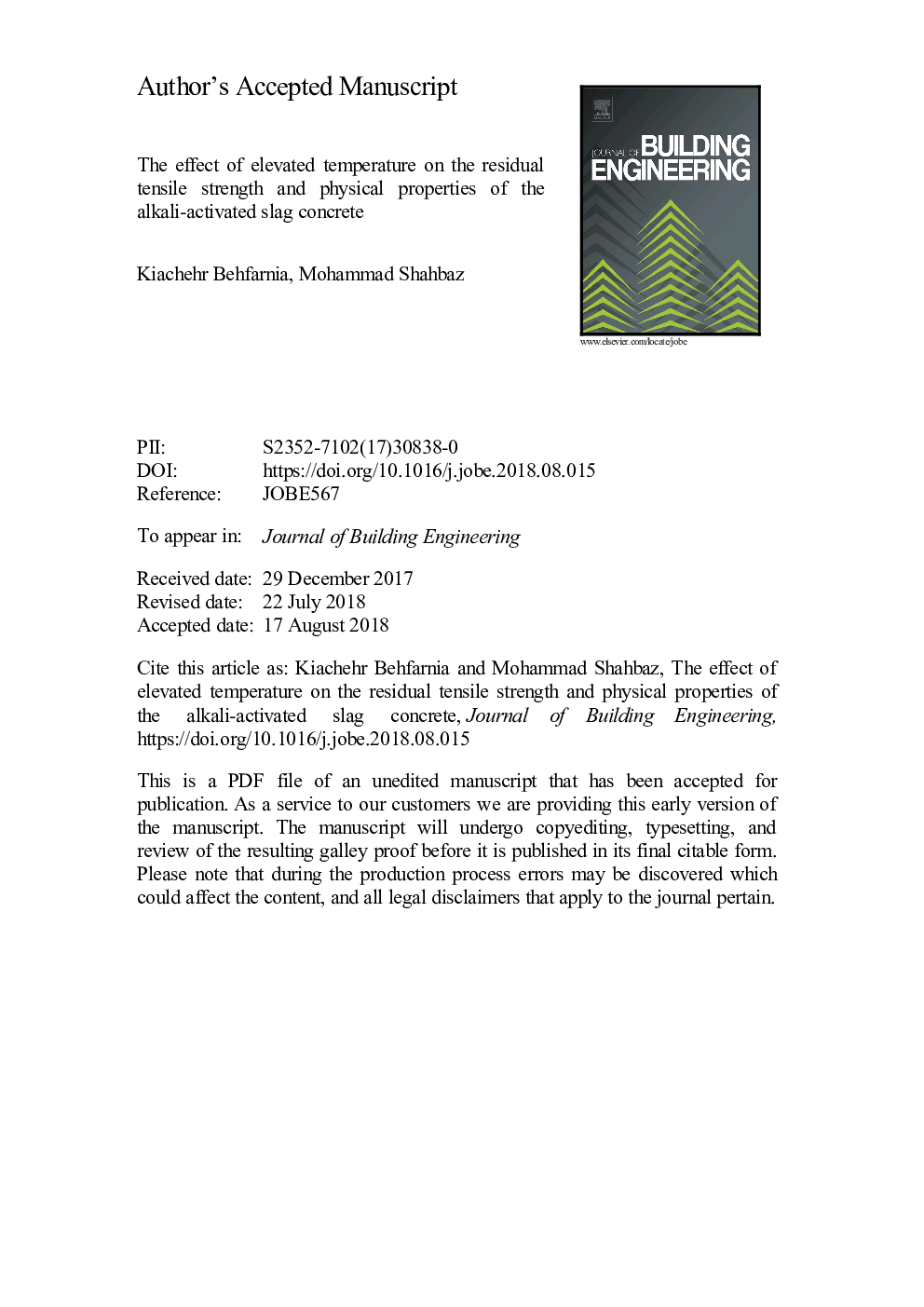| Article ID | Journal | Published Year | Pages | File Type |
|---|---|---|---|---|
| 11001088 | Journal of Building Engineering | 2018 | 30 Pages |
Abstract
Assessment of alkali-activated slag (AAS) concrete as a green alternative to normal concrete is an effort to pave the way for the sustainable development. In this study, the AAS concrete specimens, after 7, 28 and 90 days of wet curing, were exposed to the temperatures of 20, 200, 400, 600, and 800â¯Â°C, and the effect of temperature on their residual tensile strength and mass loss was assessed. Specimens of the normal concrete were also cast and tested to compare their performance with that of the AAS concrete. According to the results, the residual tensile strength of the AAS concrete at high temperatures was noticeably higher than that of normal concrete. Scanning electron microscope (SEM) images were obtained from the specimens to observe the changes in the micro-structure of the AAS and normal concrete in response to heating. Also, the change in the structure of the pores of the AAS concrete was investigated by employing mercury intrusion porosimetry (MIP).
Related Topics
Physical Sciences and Engineering
Engineering
Civil and Structural Engineering
Authors
Kiachehr Behfarnia, Mohammad Shahbaz,
